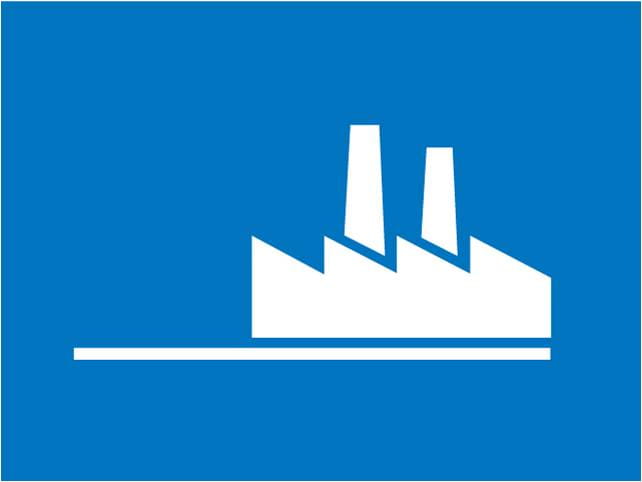5 Disasters Caused by Material Fatigue and What We Learned From Them
Versailles Train Crash, 1842
On the afternoon of May 8, 1842, birthday celebrations for King Louis Philippe I had just concluded in Versailles. Hundreds of spectators piled into countless train cars, so many that it required two locomotives to pull. As the train was making its way back to Paris, the leading locomotive broke an axle, causing the engine to derail. The chain reactions saw many of the trains cars pile onto each other and catch fire, caused by the scattering of the engines’ fire boxes. Most estimates attribute 55 deaths to the accident and subsequent fire. The common practice of locking passenger doors at that time may have also been a contributing factor.
The Versailles train crash was the first of its kind in France, and made world headlines. The crash also occurred during a period of time where metal fatigue and general degradation over time were not well understood, which led to fear and confusion among the general populous. Rail companies, government agencies, and scholars all set out to scrutinize and learn from the incident in order to prevent future catastrophes, as well as to restore public trust in the young railroad system as a safe and reliable means of transportation.
William Rankine and August Wöhler were just a few of the many researchers who dedicated years to the advancement of design, testing, and maintenance of train axles. Because of this, the Versailles accident is considered by historians to mark the beginning of serious human interest and research into the area of fatigue and fracture mechanics, which has allowed for the design and manufacture of safer, more durable goods and components.
4 stages of fatigue and fracture mechanics
1.裂缝成核2.阶段I裂纹 - 增长3.阶段II裂纹 - 生长4. ultimage延性失效The Boston Molasses Disaster, 1919
1919年1月15日,填充了230万加仑坦克在波士顿的北端崩溃了糖蜜邻里。目击者报告了听到什么sounded like gunshots, as the rivets shot out of the50英尺高的坦克。崩溃产生了一种糖蜜波最多25英尺高,距离高达35英里/小时at its peak. The forceful wave damaged steel在高架铁路轨道上的梁,扫他们的基础上的多个建筑物淹没了无数城市街区。
A full investigation ensued, which brought many contributing factors to the surface. One ofthe most critical factors was the neglect and general state of disrepair that the tank was inwhen the collapse occurred. Reports stated that basic leak and pressure tests were在将坦克放入服务之前忽略忽略。报告还表示tank, when filled, leaked so bad that it had to be painted brown to hide the imperfections.
尽管如此,坦克仍在服务中。崩溃后证据的观察结果表明,根本原因起源于A附近在圆柱形罐的底座处的人孔盖,其中箍应激浓度是highest. It is believed that a fatigue crack initiated near the manhole cover and grew to a故障之前的临界长度。其他贡献因素包括在此内部发酵tank and a sharp rise in temperatures, both of which would have caused the internalpressure of the tank to rise considerably.
De Havilland Comet Plane Crashes,1954年
The De Havilland Comet was the world’s first production commercial jetliner, produced byDe Havilland of Great Britain. The Comet was the crowning achievement for Britain at the时间,并进一步推动他们的航空优势,直到几个人的第一个fatal accidents eventually attributed to metal fatigue.
In January 1954, BOAC Flight 781 experienced explosive decompression over theMediterranean Sea in route to London from Rome. All 35 passengers and crew were killed和所有彗星aircraft were immediately grounded. After an extensive search and recoverymission, officials began examining the recovered aircraft. It became clear that the aircraft在中空中分手,官员最初认为发动机涡轮爆炸有造成了事故。对所有彗星和平面进行了涡轮修改再次允许飞。
Just weeks after being cleared for flight, another Comet aircraft, South African Airways航班201,在路线中经历过地中海的爆炸性减压Rome to Johannesburg. Again, all 21 passengers and crew were killed. This incident导致调查人员质疑他们的涡轮爆炸作为主要罪魁祸首的假设减压。
After an extensive, multi-year investigation into both flights, it was determined that metal设计缺陷引起的疲劳最终导致了两者都有爆炸性减压实例。金属疲劳起源于用于导航的前窗口附近。一些观察到贡献因素。首先,平方窗设计引起了一个窗户角落的极高应力集中。事实上,计算揭示了that up to 70% of the aircraft's ultimate stress under pressure was concentrated on the飞机窗户的角落。其次,窗口周围的支撑riveted instead of glued, as originally specified, and that the rivet holes caused fatiguecracks to initiate after repeated pressurization cycles.
这些事故的调查结果用于大修航空要求passenger cabin strength. In addition, sharp points and edges were eliminated in aircraft设计,以减少压力浓度。
- Abrasion Testing Explained06/29/16
- Six Fascinating Facts About Fasteners06/29/16
亚历山大·l·Kielland石油平台,1980年
1980年3月27日,亚历山大L. Kielland坐落在北海的挪威水域。当报告“尖锐裂缝”时,200多名工人在船舶的住宿中下班。钻机突然以30°角突破。钻机的六个锚电缆中的五条捕获,留下最终电缆以支持大规模的应力水平。钻机在这个位置保持相对稳定的一段时间,直到最终电缆骨折,钻机完全倾覆到大海中。在倾销期间,超过120名工人被杀死,这是自第二次世界大战以来的挪威水域中最严重的灾难。
随后的调查能够将事件从那个晚上搭配在一起,并确定崩溃的起源是由于钻机的一个结构支护疲劳裂缝引起的。然后将裂缝追踪到小型6毫米圆角焊缝,该焊缝连接到支撑轴承的非负载轴承法兰板。圆角焊缝具有较差的轮廓和显着的冷裂化,这导致疲劳强度显着降低。凸缘板也通过显着的层状撕裂削弱,压力浓度增加。北海的钻机经历的周期性应力进一步加剧了这种情况。
Eschede Train Disaster, 1998
On June 3, 1998 a high speed train traveling from Munich to Hamburg was derailed when a single train wheel failed, causing a chain reaction which lead to a bridge collapse and over a dozen derailed train cars.
A steel tire on car #1 started the chain reaction when it failed, released from the train, and became embedded in the floor of the first car. As the train passed through a switch, the embedded tire slammed against the guide rail of the switch, causing the guide rail to also embed into the train, which lifted the trains axlesoff of the track. When the train approached the second switch, one of the derailed wheels struck the switch, which changed its setting. This caused the rear axle of car #3 to be pulled onto a parallel track, violently derailing the car, which struck and destroyed the main supports of an overpass bridge. Several more cars, traveling at 120 mph, struck the bridge until it collapsed completely, blocking the entirety of the track. The remaining cars hit full speed into the rubble, causing a large pileup.
总体而言,据报道,101例死亡率随着近100个伤害。在其他因素中,研究人员确定了车轮的设计在实施前缺陷并缺乏足够的验证测试。工程师在轮胎和轮体之间放置了橡胶阻尼环,以努力减少巡航期间的振动。这导致了以几种方式提高疲劳易感性:
- 随着车轮转过来,轮胎被扁平化成椭圆形每一场革命(典型日期都有约500,000次)服务),具有相应的疲劳效果。
- In contrast to the pure monobloc wheel design, cracks could also在轮胎内部形成。
- 由于轮胎由于磨损而变薄,动态力量是夸张,导致裂缝增长。
- 轮胎的平坦斑点和山脊或膨胀显着增加了装配上的动态力量和大大加速磨损。
Other contributing factors included improper maintenance (records indicated that this particular wheel has failed to pass inspections on several occasions leading up to the crash, although it was never replaced), overbridge design (wasn’t designed with spans), and the use of welds in the carriage bodies (led to “unzipping” during the crash) As a result of the disaster, all wheels with a similar design were replaced with monoblock wheels.
View more articles about航空航天测试服务更多部门活力yabo88更新运输测试服务
Find related articles to you through the核


